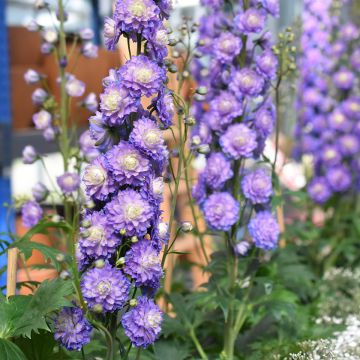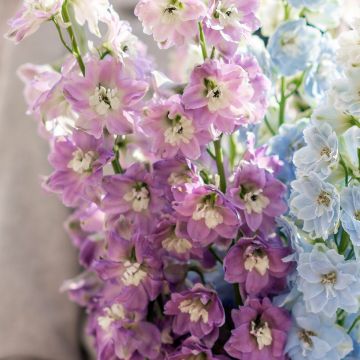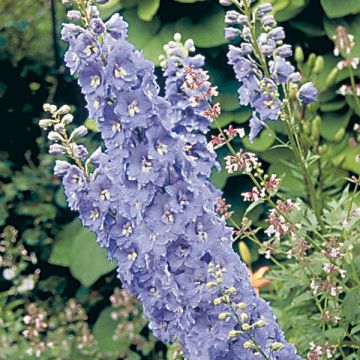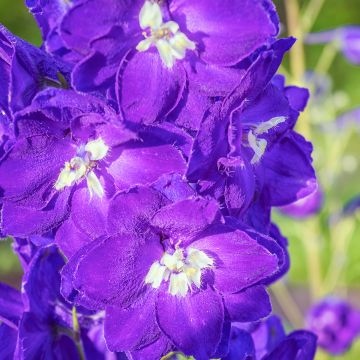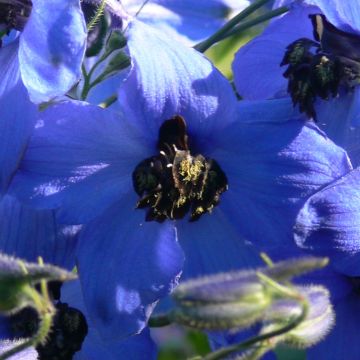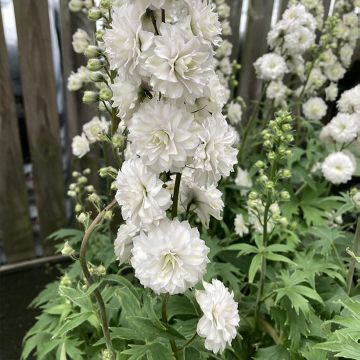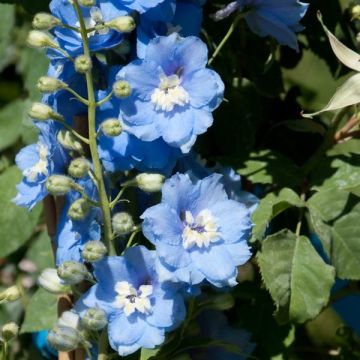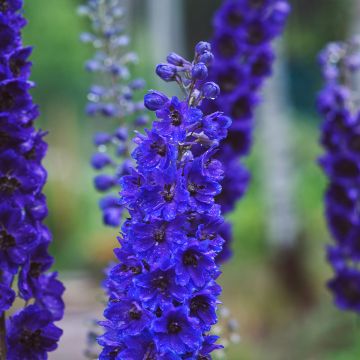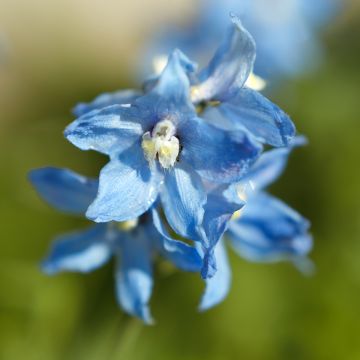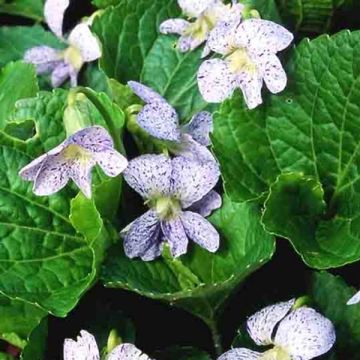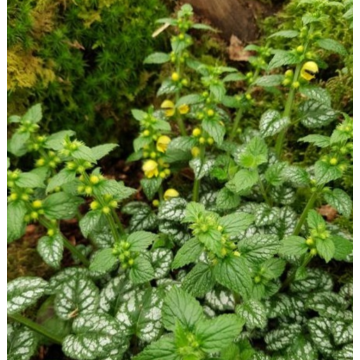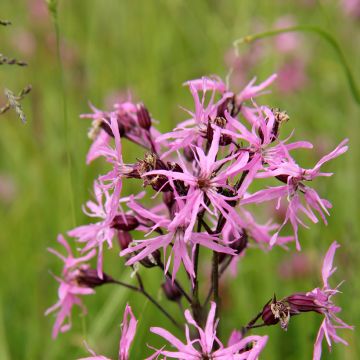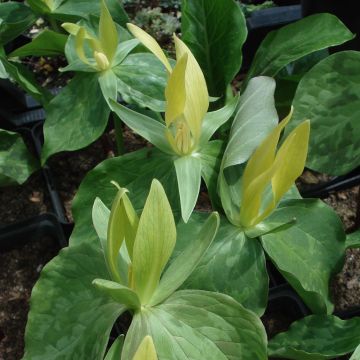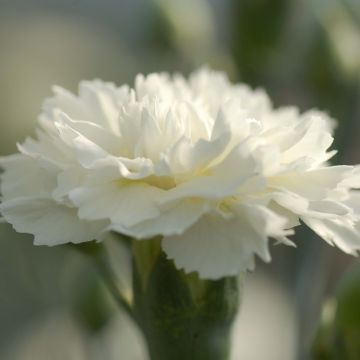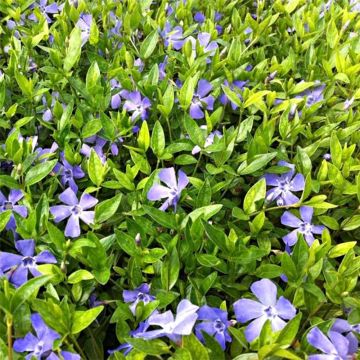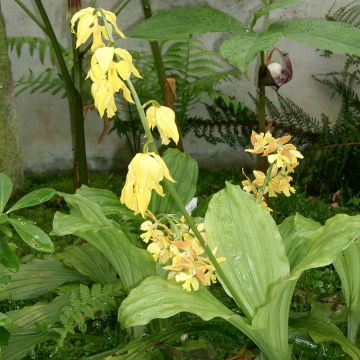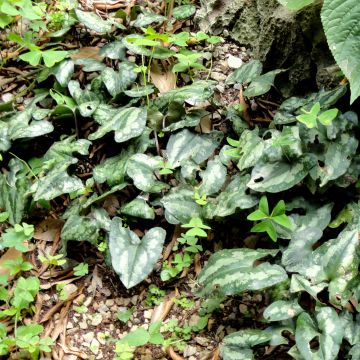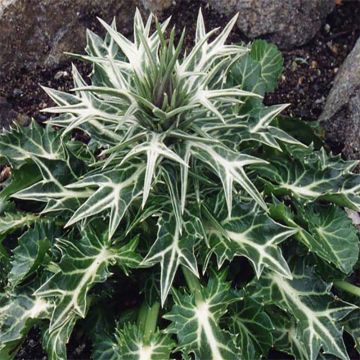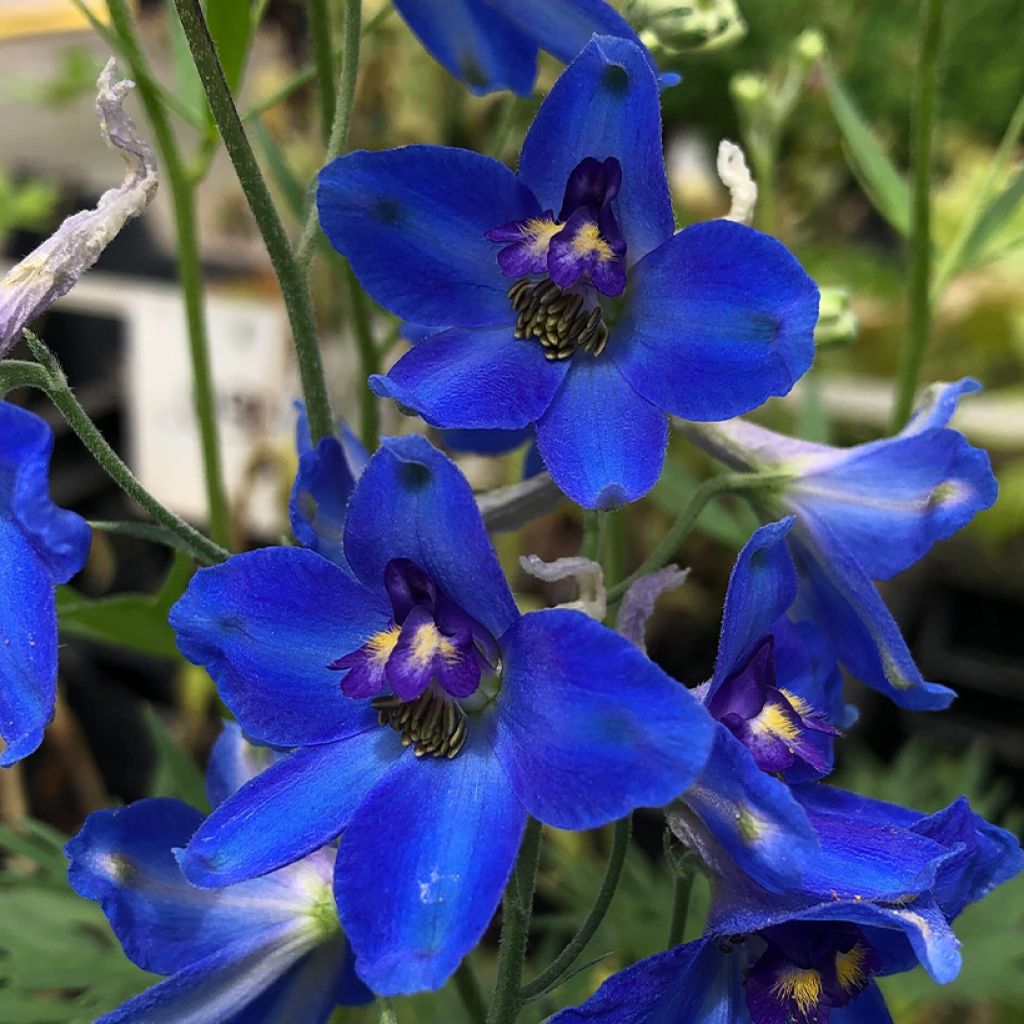

Delphinium Völkerfrieden
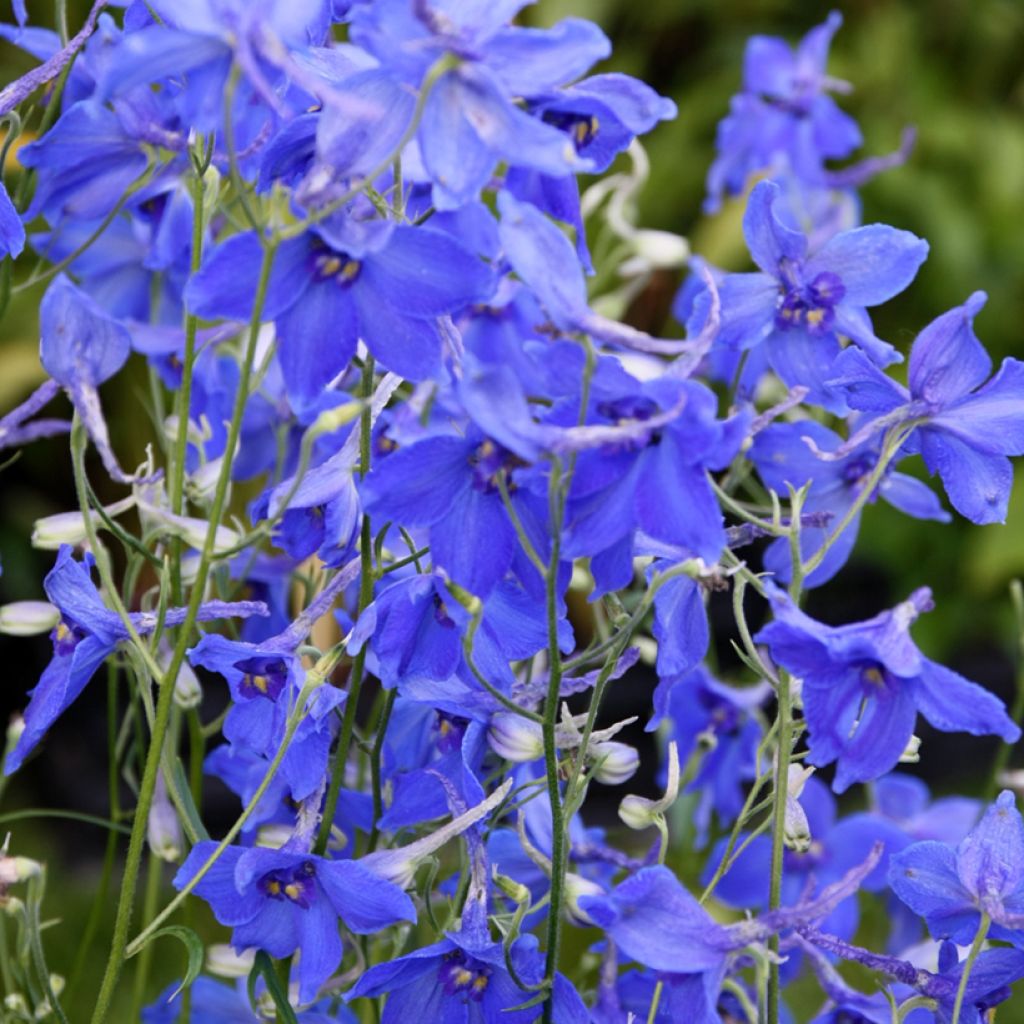

Delphinium Völkerfrieden
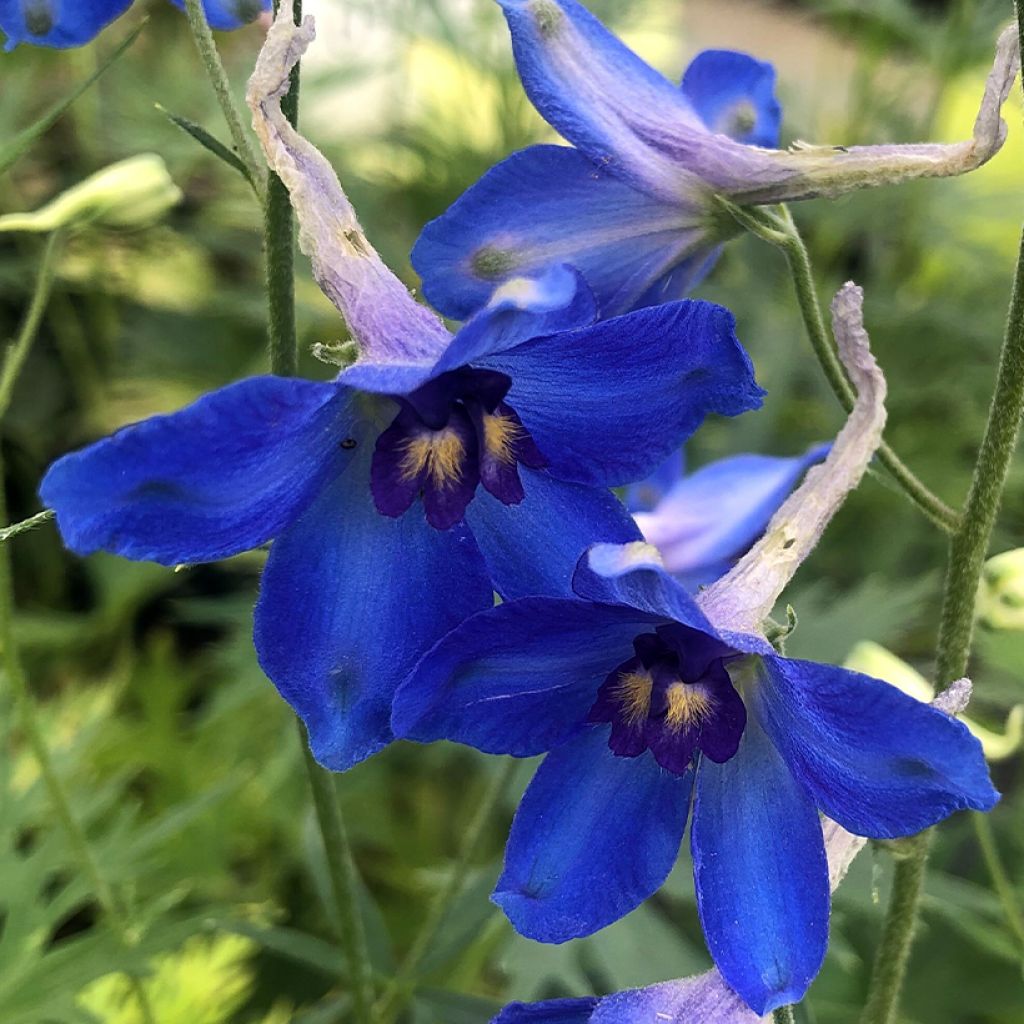

Delphinium Völkerfrieden
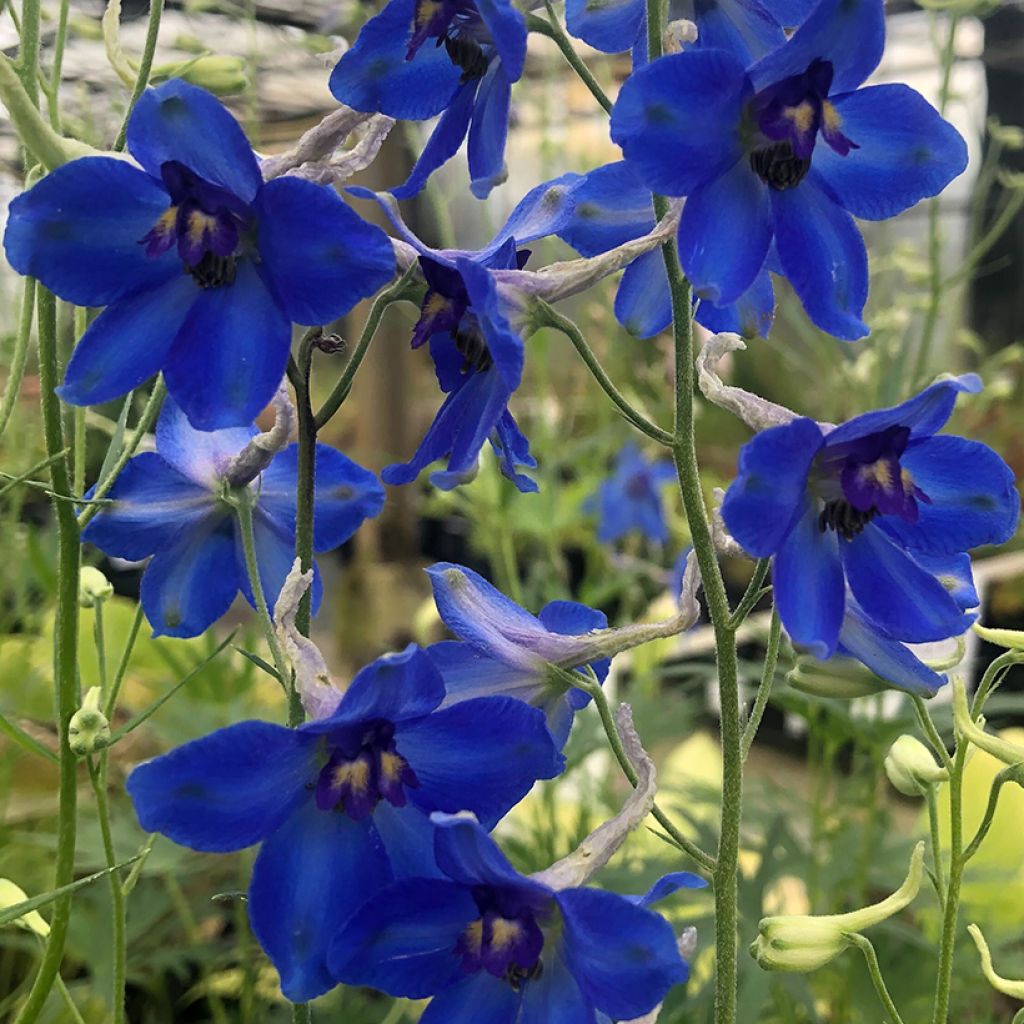

Delphinium Völkerfrieden
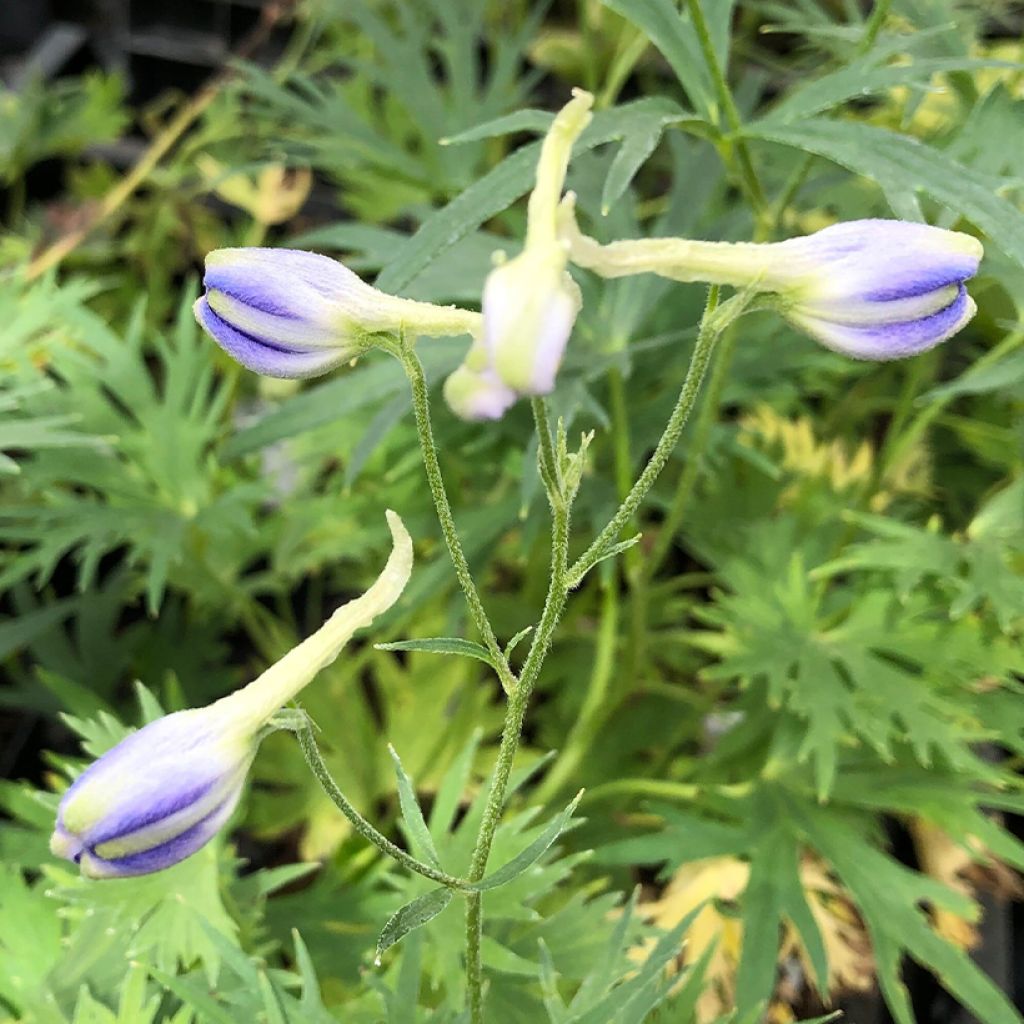

Delphinium Völkerfrieden
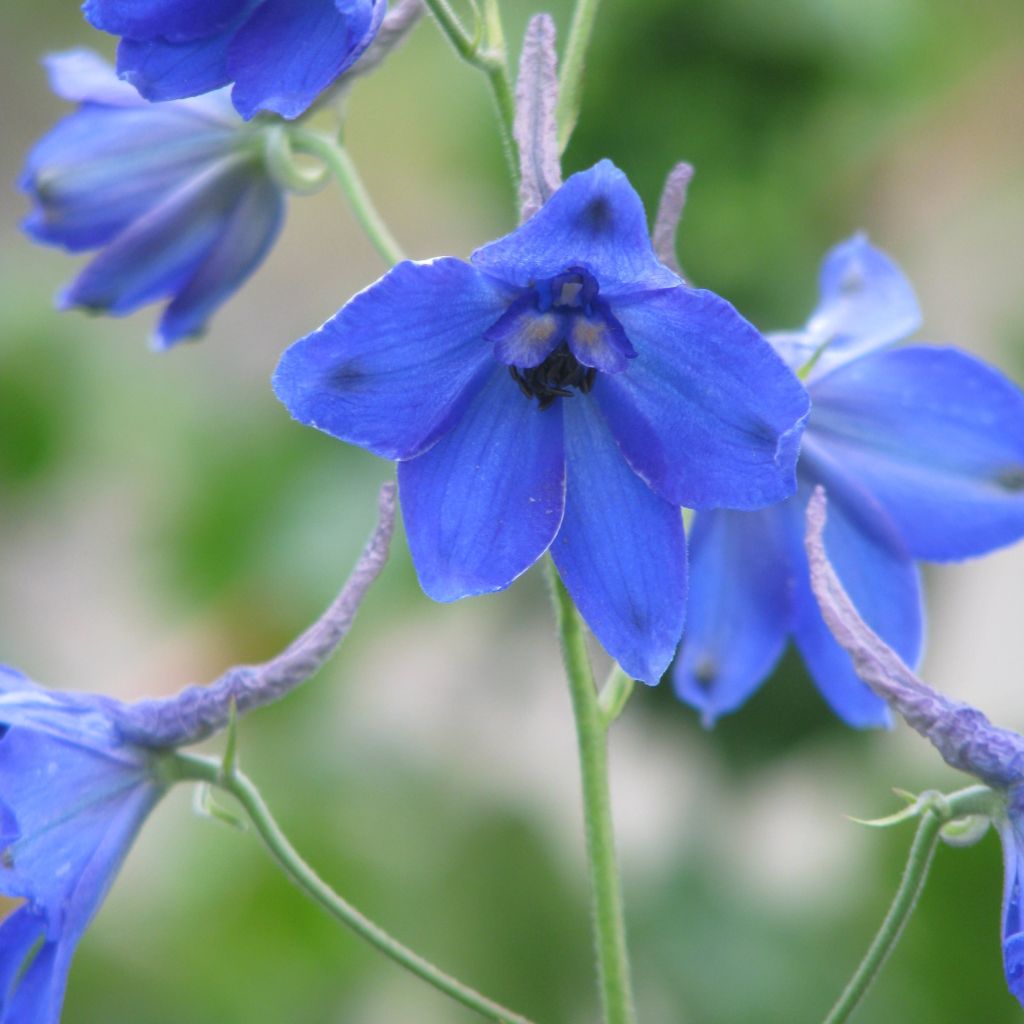

Delphinium Völkerfrieden
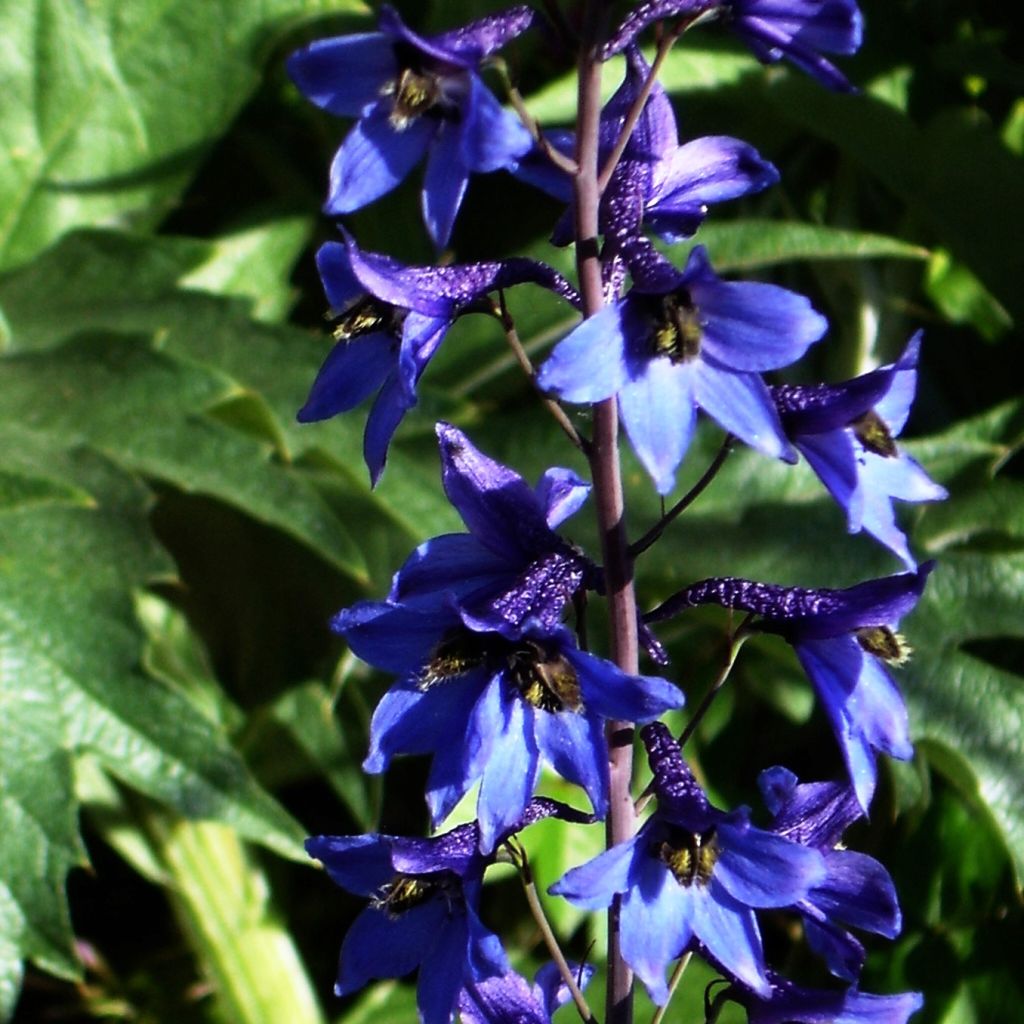

Delphinium Völkerfrieden
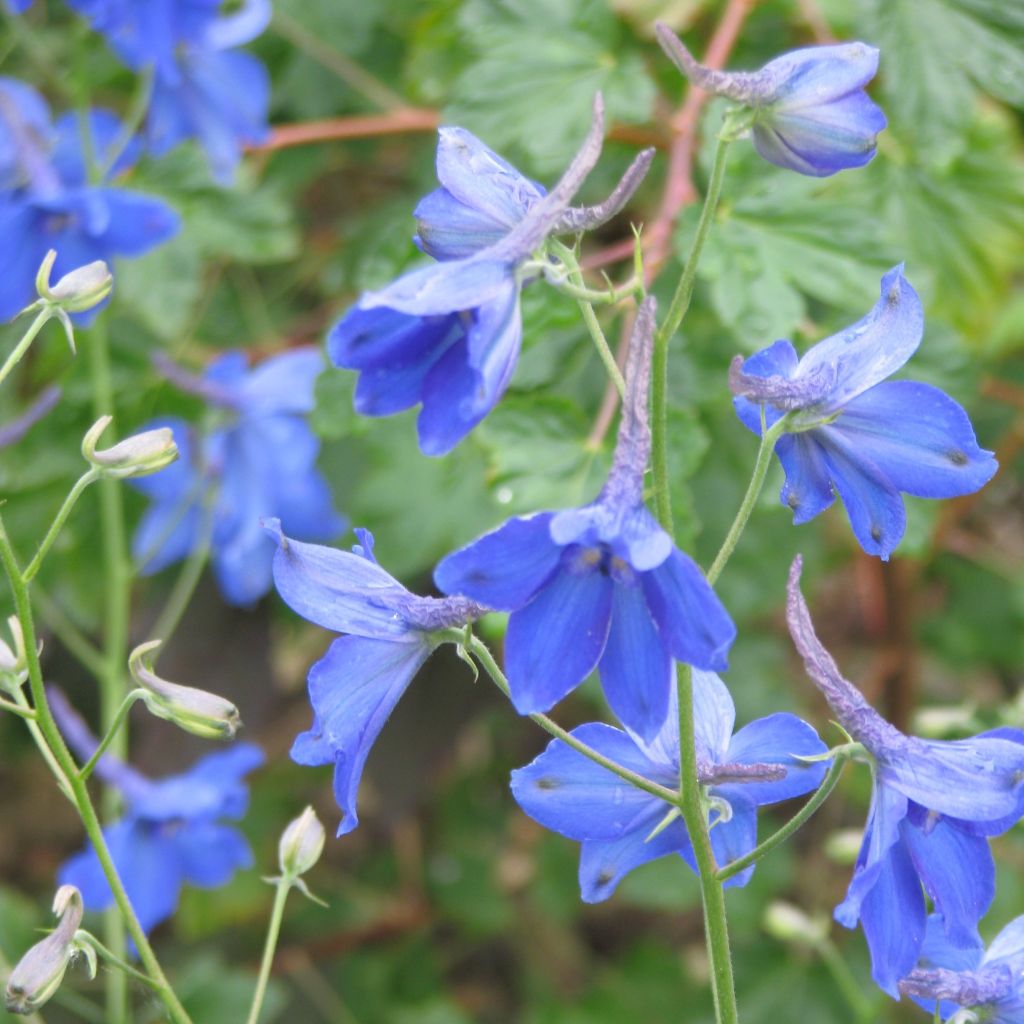

Delphinium Völkerfrieden
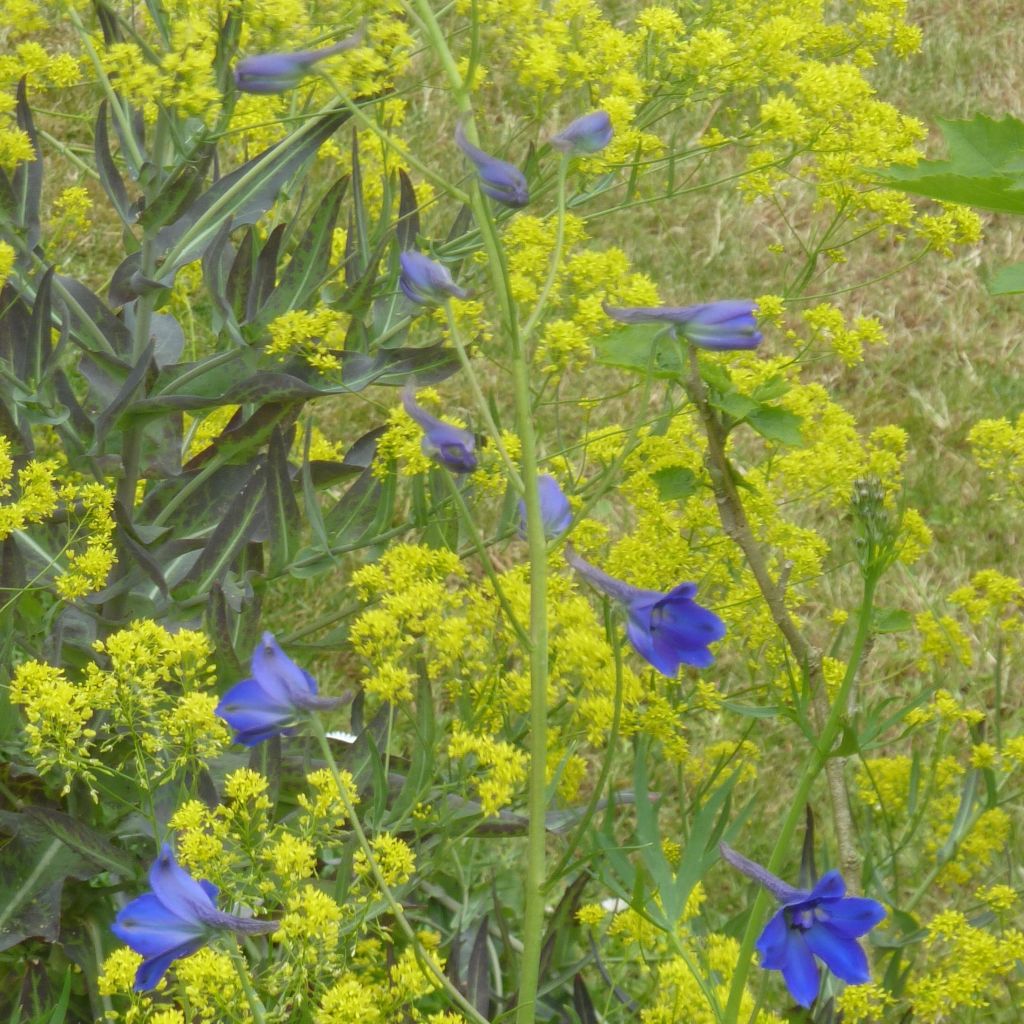

Delphinium Völkerfrieden
Delphinium Völkerfrieden
Delphinium x belladonna Völkerfrieden
Belladonna Larkspur, Perennial Larkspur
This item cannot be shipped to the selected country
Delivery charge from €5.90
More information
Schedule delivery date,
and select date in basket
This plant carries a 12 months recovery warranty
More information
We guarantee the quality of our plants for a full growing cycle, and will replace at our expense any plant that fails to recover under normal climatic and planting conditions.
From €5.90 for pickup delivery and €6.90 for home delivery
Express home delivery from €8.90.
Does this plant fit my garden?
Set up your Plantfit profile →
Description
Delphinium (Belladonna Group) 'Völkerfrieden' is a charming herbaceous perennial. Smaller than its Pacific series cousins, it is also disease-resistant and does not necessarily require staking. Its flower clusters are composed of single flowers, arranged sparsely, but with a deep colour. This gentian blue with subtle violet highlights looks wonderful in borders alongside summer flowers, and in bouquets. Its flowering period is long and can last from June to October.
Preferring moist and rich soils, Delphiniums do not appreciate dry and poor substrates. However, they also do not like to have their feet in heavy and waterlogged soil. They do not mind harsh winters and thrive in sunny locations. If you provide these conditions, you will find they come back every year. They have an upright habit. Stems rise from their base, which consists of finely cut, green and delicate leaves, ending with clusters of flowers about 30 cm (12in) long, very tapered and conical. Small bell-shaped flowers with five pointed and barely reflexed petals, about 4 cm (2in) in diameter are attached to them. They gradually open from the bottom to the top of the cluster. Note the spur at the back, as well as the 'bee' in the centre, are quite characteristic of the genus. Flowering begins in June and, if you remove faded stems as they appear, will continue until autumn, attracting pollinators all summer long.
Of modest size (100/120 cm (39/47in)) compared to its giant cousins, it is better in the wind. Its clusters are less dense and more flexible, so its stems are less likely to break. Nevertheless, this Larkspur is not lacking in character. The colours of its flowers are rich and provide contrast to green-yellow ensembles: Behind Lady's Mantle, grasses, or in front of a Honeysuckle. It is also at home in a rustic setting, surrounded by lupins and foxgloves, in front of Wild Roses.
Note: From March to September, the stems of our delphiniums are cut short to allow for better branching of the crown and to achieve optimal rooting. This also prevents the stems from breaking during transport.
Report an error about the product description
Delphinium Völkerfrieden in pictures
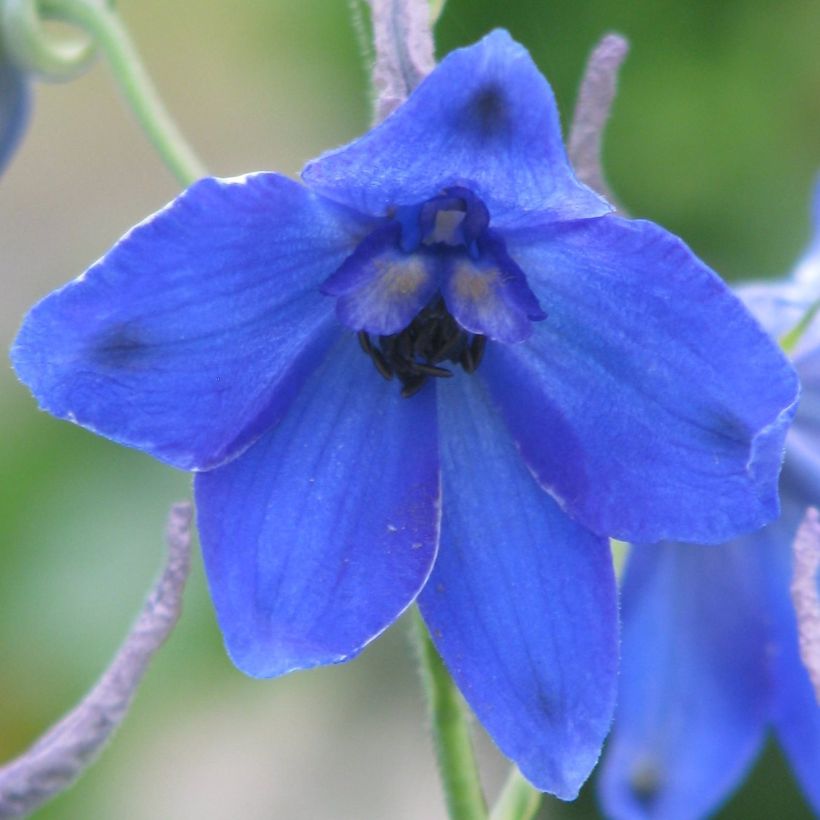

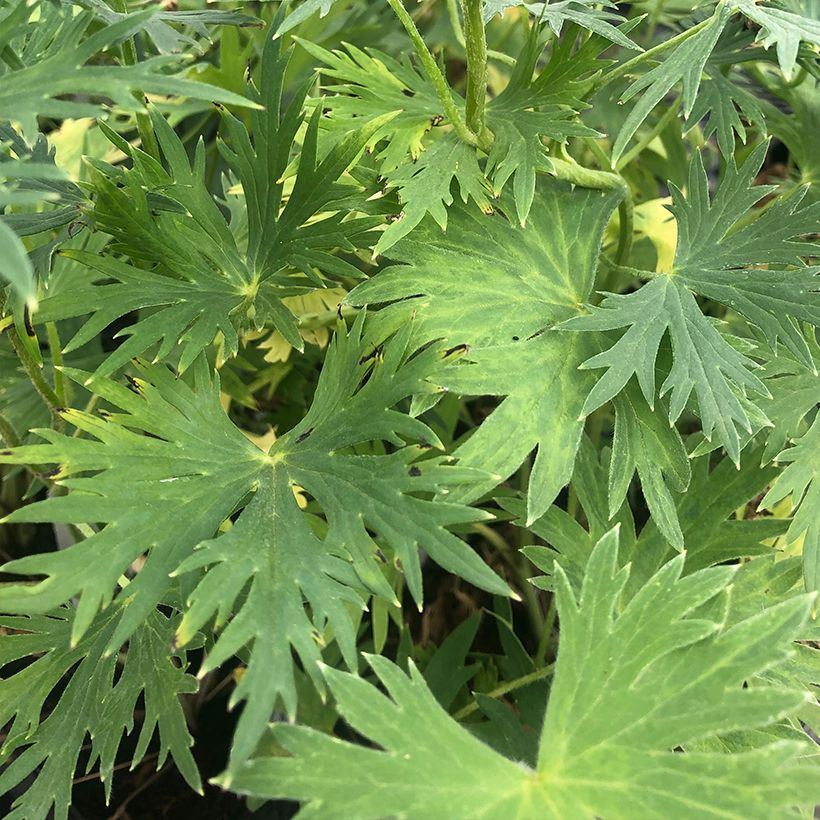

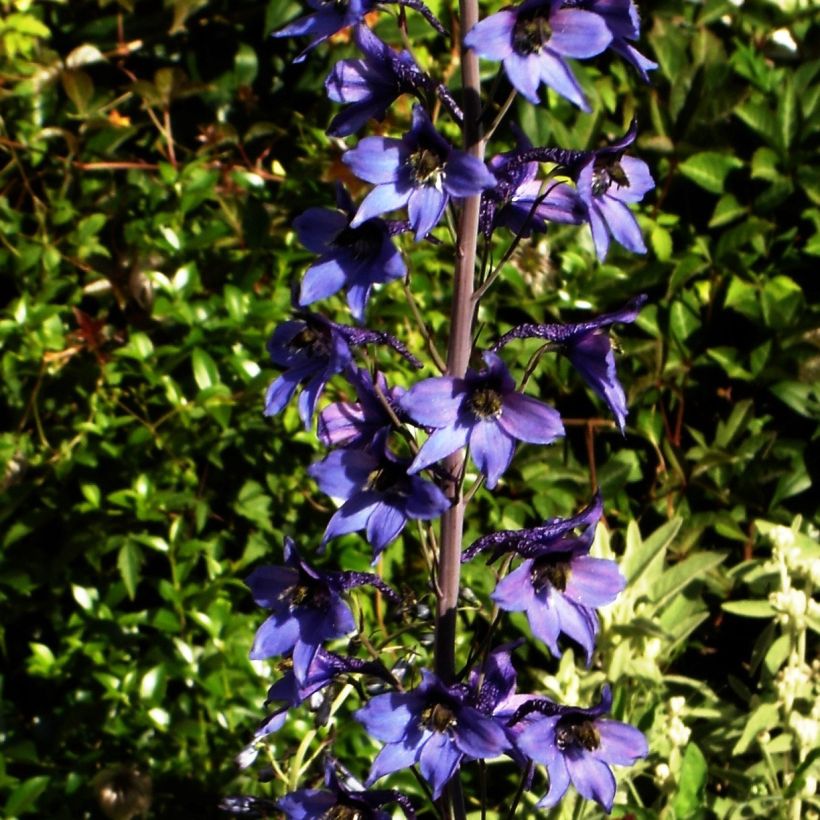

Flowering
Foliage
Plant habit
Safety measures
Botanical data
Delphinium
x belladonna
Völkerfrieden
Ranunculaceae
Belladonna Larkspur, Perennial Larkspur
Cultivar or hybrid
ingestion
Cette plante est toxique si elle est ingérée volontairement ou involontairement.
Ne la plantez pas là où de jeunes enfants peuvent évoluer, et lavez-vous les mains après l'avoir manipulée.
Pensez à conserver l'étiquette de la plante, à la photographier ou à noter son nom, afin de faciliter le travail des professionnels de santé.
Davantage d'informations sur https://plantes-risque.info
Other Delphinium - Larkspur
Planting and care
Delphinium (Belladonna Group) 'Völkerfrieden' should be planted in spring or autumn, in the ground or in a pot. Make sure the pot is large enough to accommodate it (50cm (20in) x 50cm (20in)) and keep it away from strong winds. Although easy to grow, Delphiniums have specific requirements: they dislike heavy and damp soils, as well as dry and poor soils. The ideal soil for them is fertile, rich in humus, loose, and moist, even in summer, but not waterlogged in winter. They prefer to be in full sun. Under these conditions, they will live for many years. Also, be aware of slugs and snails that can cause damage at the beginning of the growing season.
Planting period
Intended location
Care
-
, onOrder confirmed
Reply from on Promesse de fleurs
Spring flowering perennials
Haven't found what you were looking for?
Hardiness is the lowest winter temperature a plant can endure without suffering serious damage or even dying. However, hardiness is affected by location (a sheltered area, such as a patio), protection (winter cover) and soil type (hardiness is improved by well-drained soil).

Photo Sharing Terms & Conditions
In order to encourage gardeners to interact and share their experiences, Promesse de fleurs offers various media enabling content to be uploaded onto its Site - in particular via the ‘Photo sharing’ module.
The User agrees to refrain from:
- Posting any content that is illegal, prejudicial, insulting, racist, inciteful to hatred, revisionist, contrary to public decency, that infringes on privacy or on the privacy rights of third parties, in particular the publicity rights of persons and goods, intellectual property rights, or the right to privacy.
- Submitting content on behalf of a third party;
- Impersonate the identity of a third party and/or publish any personal information about a third party;
In general, the User undertakes to refrain from any unethical behaviour.
All Content (in particular text, comments, files, images, photos, videos, creative works, etc.), which may be subject to property or intellectual property rights, image or other private rights, shall remain the property of the User, subject to the limited rights granted by the terms of the licence granted by Promesse de fleurs as stated below. Users are at liberty to publish or not to publish such Content on the Site, notably via the ‘Photo Sharing’ facility, and accept that this Content shall be made public and freely accessible, notably on the Internet.
Users further acknowledge, undertake to have ,and guarantee that they hold all necessary rights and permissions to publish such material on the Site, in particular with regard to the legislation in force pertaining to any privacy, property, intellectual property, image, or contractual rights, or rights of any other nature. By publishing such Content on the Site, Users acknowledge accepting full liability as publishers of the Content within the meaning of the law, and grant Promesse de fleurs, free of charge, an inclusive, worldwide licence for the said Content for the entire duration of its publication, including all reproduction, representation, up/downloading, displaying, performing, transmission, and storage rights.
Users also grant permission for their name to be linked to the Content and accept that this link may not always be made available.
By engaging in posting material, Users consent to their Content becoming automatically accessible on the Internet, in particular on other sites and/or blogs and/or web pages of the Promesse de fleurs site, including in particular social pages and the Promesse de fleurs catalogue.
Users may secure the removal of entrusted content free of charge by issuing a simple request via our contact form.
The flowering period indicated on our website applies to countries and regions located in USDA zone 8 (France, the United Kingdom, Ireland, the Netherlands, etc.)
It will vary according to where you live:
- In zones 9 to 10 (Italy, Spain, Greece, etc.), flowering will occur about 2 to 4 weeks earlier.
- In zones 6 to 7 (Germany, Poland, Slovenia, and lower mountainous regions), flowering will be delayed by 2 to 3 weeks.
- In zone 5 (Central Europe, Scandinavia), blooming will be delayed by 3 to 5 weeks.
In temperate climates, pruning of spring-flowering shrubs (forsythia, spireas, etc.) should be done just after flowering.
Pruning of summer-flowering shrubs (Indian Lilac, Perovskia, etc.) can be done in winter or spring.
In cold regions as well as with frost-sensitive plants, avoid pruning too early when severe frosts may still occur.
The planting period indicated on our website applies to countries and regions located in USDA zone 8 (France, United Kingdom, Ireland, Netherlands).
It will vary according to where you live:
- In Mediterranean zones (Marseille, Madrid, Milan, etc.), autumn and winter are the best planting periods.
- In continental zones (Strasbourg, Munich, Vienna, etc.), delay planting by 2 to 3 weeks in spring and bring it forward by 2 to 4 weeks in autumn.
- In mountainous regions (the Alps, Pyrenees, Carpathians, etc.), it is best to plant in late spring (May-June) or late summer (August-September).
The harvesting period indicated on our website applies to countries and regions in USDA zone 8 (France, England, Ireland, the Netherlands).
In colder areas (Scandinavia, Poland, Austria...) fruit and vegetable harvests are likely to be delayed by 3-4 weeks.
In warmer areas (Italy, Spain, Greece, etc.), harvesting will probably take place earlier, depending on weather conditions.
The sowing periods indicated on our website apply to countries and regions within USDA Zone 8 (France, UK, Ireland, Netherlands).
In colder areas (Scandinavia, Poland, Austria...), delay any outdoor sowing by 3-4 weeks, or sow under glass.
In warmer climes (Italy, Spain, Greece, etc.), bring outdoor sowing forward by a few weeks.

































